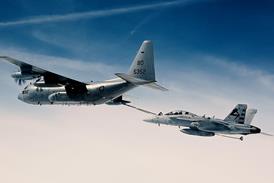David Learmount/LONDON
There was a deafening silence from UK National Air Traffic Services (NATS) between 5 April and 13 May. At the beginning of the period, NATS had somewhat nervously announced that it had run the first full "operational" test of the much delayed new en route air traffic control centre (NERC). It appeared to have worked almost without a hitch.
Then came the silence. No, said NATS chief Bill Semple, he had not accepted handover of the operating software from contractor Lockheed Martin. Yes, the test appeared to have gone perfectly, but NATS was going to go through the software performance "line by line" before Semple would finally take responsibility for the system on behalf of NATS.
On 13 May, Semple finally announced acceptance of an operating system based on software which the US Federal Aviation Administration had rejected for being too complex. It is very different now, NATS insists. So the UK's NERC, the world's first complete 21st century air traffic control centre, has begun its work-up period.
Every day since then, most of the 194 workstations have been operational. Today, controllers and engineers silently work at displays showing real air traffic in the London flight information region (FIR). They leave the communications to their colleagues at the London Area and Traffic Control Centre (LATCC), but can check out all the workstation and display functions repeatedly.
The short term conflict alert (STCA) system occasionally highlights a pair of close contacts, then the brightness subsides in a second or two. Move the mouse pointer to an aircraft data block which partially overlaps another, hold down the right mouse button and drag it clear. The data block moves. If a controller has any points to make about the system's operation, apparent faults, or has other comments, these are logged and investigated. As well as checking for system integrity, this is the beginning of the human test for the total system.
When the system work-up is complete, LATCC controllers moving to NERC will each be given 22 days training on the new equipment. Simulation will enable them to carry out all functions at the new workstations.
COPING AT LATCC
About 100km (60 miles) away from the NERC's Swanwick site, the LATCC, near Heathrow Airport, faces a traffic load increasing at 7% a year, the en route part of which should have been passed to NERC in December 1996. Semple admits that the 1996 target was an ambitious one, but points out that LATCC has not stood still. There has been extensive airspace sector reorganisation to aid flow management, with restructuring of the busy North Sea and Clacton sectors to be implemented in about October. Meanwhile, progressively more sophisticated computer predictions enable congestion to be minimised, and at workstations, safety systems like STCA have been introduced.
Adjoining the traditionally equipped LATCC en route control room is the London terminal manoeuvring area (TMA)sector control. The TMA controllers' workstations and displays closely resemble those at Swanwick and have almost identical capabilities. This sector has been laterally and vertically extended as part of the overall sector reorganisation in the UK's south east, and the integration of the approach controllers for the main London area airports into the TMA's total function has produced greater efficiency.
In fact the NERC's system, the day it opens, will have much the same capability as LATCC's. The big difference, Semple points out, is that the LATCC hardware and software capacity, and even the building itself, are close to the limits of their upgrade and expansion potential. NERC, however, with much greater computing capacity and physical space than it needs for today's task, has ample room for upgrades.
There are only a few immediate advantages which NERC will give controllers. The first is more fully qualified controllers per sector workstation, although there will be fewer assistants, because computerisation will automate some of the ancillary tasks. The others include:
sector aircraft handover "offers" are automatic; "activation" is chosen by the controller; a "what if" function to check decisions; same-level traffic can be highlighted; "quick-look" keys can give data about any contact beyond that which is in its data block; simple data-block displacement.There is some way to go yet: ATC procedures with the new equipment have to be developed and verified, as does interoperability with the whole NATS and Eurocontrol infrastructure. Then training starts. Meeting the hoped-for November 1999 start will be a big challenge.
Source: Flight International























